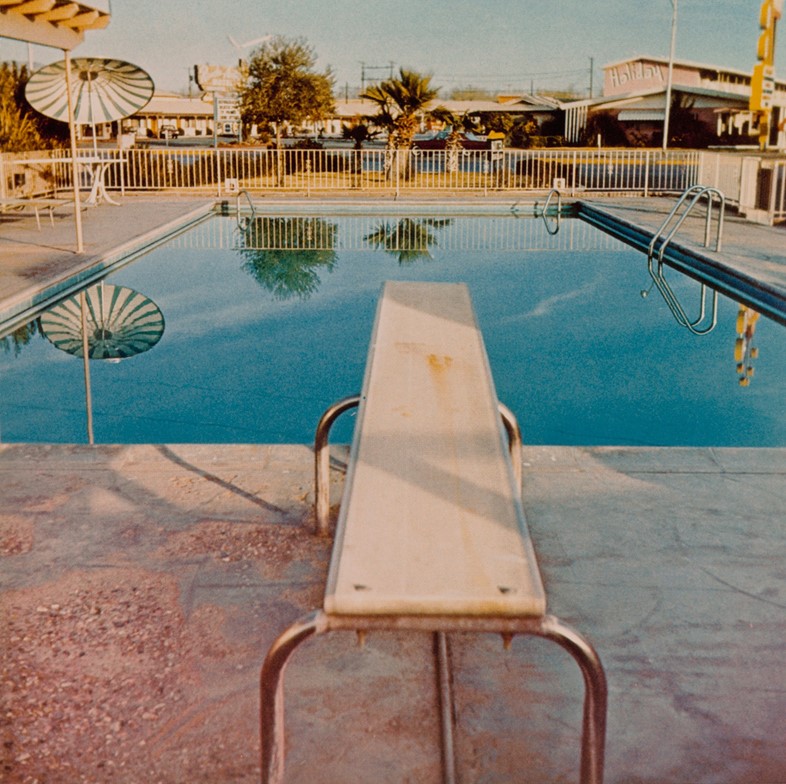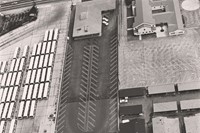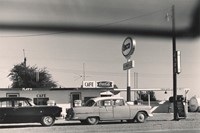From palm trees and gas stations to swimming pools and signage
Pop Art icon Ed Ruscha is famous for his paintings that detach words and text fragments from their context, setting them afloat in meaningful isolation. Using the language, fonts and visuals of consumerism, he cultivates the tension between notions of ephemera and art, elevating everyday Americanisms into icons. As he told the Financial Times in 2015, “things that catch my attention are things that are usually negligible or forgotten, or overlooked or denigrated in some way or another”.
Ruscha’s photographs have a similar preoccupation although, indifferent to photography as a fine art medium, he uses it simply as a means to document. The Western Californian backdrop is mined for its mundane details that are then pushed to the fore by repetition. This is not the hyper-glamorous Los Angeles of David Hockney paintings or Frank Lloyd Wright houses. This is an unretouched, everyday landscape, depicted without filter or finesse.
While Ruscha has never conflated his paintings and photographs, a new show at the Harry Ransom Centre in Austin demonstrates how their perspectives intertwine. Ed Ruscha: Archaeology and Romance draws on the art books the artist created between 1963-1978, featuring photos, drawings and prints which clearly form the raw material for his pared back paintings. In photographs of shop fronts, gas stations, cars, parking lots and advertising signage can be found the beginnings of the visual lexicon that he distils and compresses on his canvases. While their preoccupations become clear through repetition, the photographs retain the surrounding context, incorporating Ruscha’s unfiltered, first hand view of the landscape, as romantic, scruffy, beautiful in its banal details.
40 years on, these details have become definitive cultural signposts for LA, California, even America as a whole. Here we explore Ruscha’s five favoured motifs.
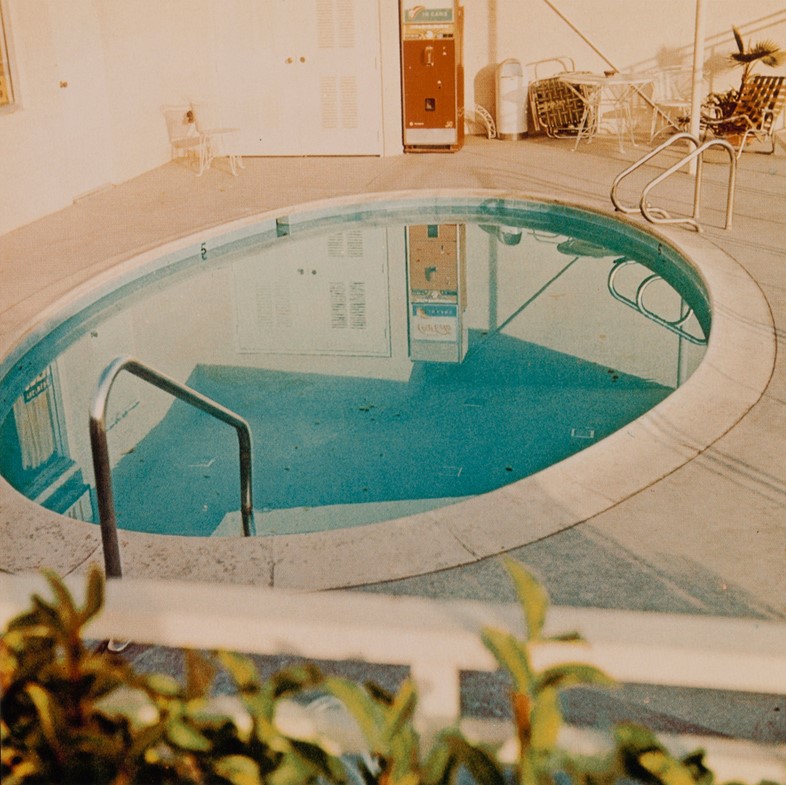
1. Swimming Pools
The Ruscha swimming pool is from the other side of the tracks to David Hockney’s A Bigger Splash. Here the colours are faded and the diving board is stained. Real life intrudes, rather than the shimmering irreality of the Hollywood hills. The shabby beauty of Pool #2 comes from Ruscha’s 1968 book Nine Swimming Pools and a Broken Glass, a series of pools followed by a shot of a smashed glass. It’s kitsch rather than classy, making the statement that the Californian heat makes a pool a near necessity.
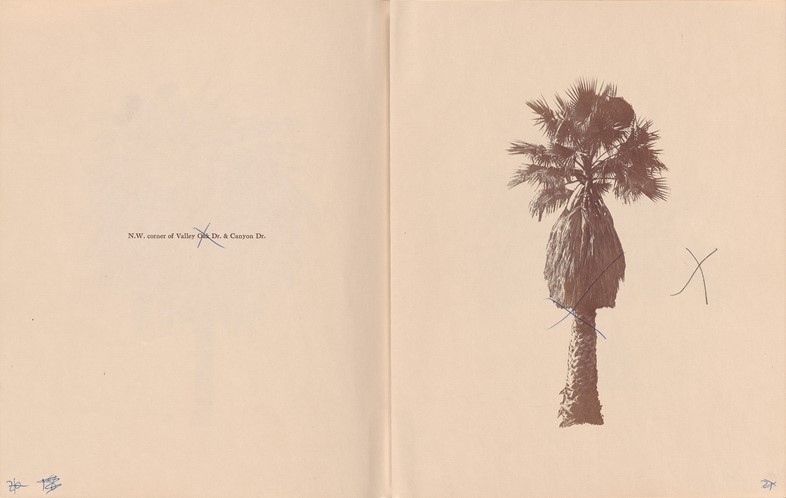
2. Palm Trees
For the 1971 book A Few Palm Trees, Ruscha photographed a series of palm trees, then positioned them as cut-outs on a page. Tall, thin, stubby, squat: when isolated they transformed from trees into abstract motifs, their characteristics more aligned with signage than with the natural world. Today the palm tree is visual shorthand for California as the ultimate American paradise. It is a symbol of the glamour that first drew Ruscha here from Oklahoma in the 1950s, but in its mundane ubiquity it also represents the many contradictions of Los Angeles, the seductive and repulsive elements that make it so hard for so many to survive.

3. Cars
The necessity for a car to survive in Los Angeles is well documented. The car symbolises prosperity in a city without functioning public transport, as well as a torment to those desperately seeking a parking space. Ruscha’s photographs often feel like they have been snatched unplanned from the window of a moving vehicle, yet this insouciance only serves to underline the scale of the urban environment they depict. America’s car culture is serviced by an infrastructure of endless open roads, vast parking lots and countless gas stations. These elements, visual shorthand for freedom and confinement, are totemic today, inseparable from ideas of both California and America. Ruscha as artist and businessman engages with the unquenchable desire of the American for car consumption – in a notebook he scribbles, “the Henry Ford of books… ‘a book in everyone’s garage’,” followed by the musing “… strange problems, after all where am I going to park all my cars?”
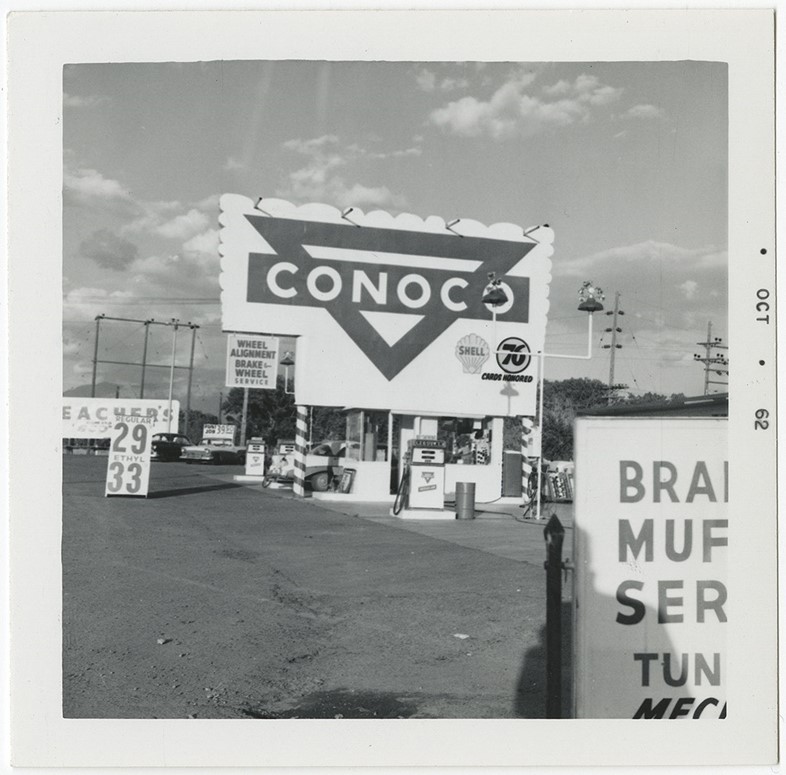
4. Gas Stations
Ruscha first became preoccupied by roadside gas stations when he noticed how many he encountered along the route he took from LA to Oklahoma City to visit his parents. In a 1962 photobook, Twenty Six Gasoline Stations, he counted and captured them, describing their appearance on the road as “like a musical rhythm to me – cultural belches in the landscape”. Essential yet barely noticed, the gas station is a place where every single American must meet and mingle, yet it is disregarded as a basic essential of existence. Ruscha’s images transform the gas station into a destination in itself, elevating its curves, colours and signage into the icon of Americana it has since become.
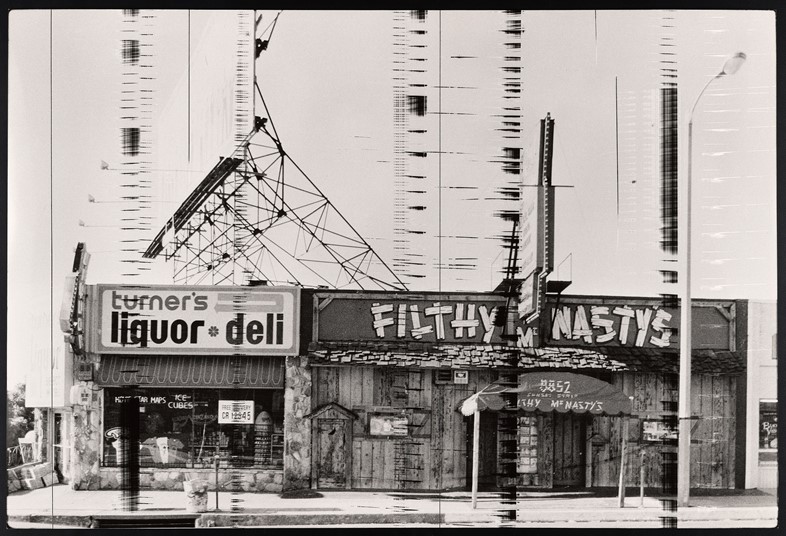
5. Signage
Ruscha arrived in Los Angeles in 1956 with ambitions to be a sign painter. He applied to the Art Center to do a design course, but on discovering it was full he resigned himself to the more shambolic fine art crowd at the Chouinard Art Institute. Here he combined his interest in industrial design – fonts, advertising – with painting classes, a combination that would come to define him. His lifelong fascination with words and lettering as invitation, exploitation and fantasy is easily deciphered in shots like Filthy McNasty’s from 1976, as well as the notebook scraps featured in the exhibition. Single words – “BANKS TANKS PRANKS…BABYCAKES!” – reveal his hunt for the one that will hit just the right spot. He said, “I like the idea of a word becoming a picture, almost leaving its body, then coming back and becoming a word again.” Obviously this is inherent to his art, but his photographs show that it is also inherent to the advertising signage he sought to distil and celebrate within it.
Ed Ruscha: Archaeology and Romance is at the Harry Ransom Center in Austin until January 6, 2019.
